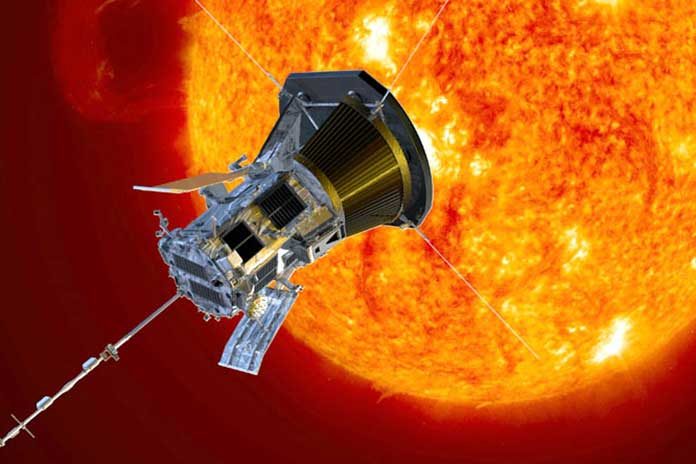Launched on August 12, 2018, the probe has reached its perihelion, the second point on its orbit furthest from the Sun and is now entering the outbound phase of its second solar orbit. At 6:40 p.m. EDT on April 4, 2019, the spacecraft passed within 15 million miles of our star, tying its distance record as the closest spacecraft ever to the Sun.
Parker Solar Probe was traveling at 343,112 kilometers per hour during this perihelion. And mission scientists have reported that the spacecraft is operating well and all instruments are collecting science data, sending back normal signals through NASA’s Deep Space Network.
The probe started this solar encounter on March 30, and it will conclude on April 10. The solar encounter phase is roughly defined as when the spacecraft is within 0.25 AU — or 23,250,000 miles — of the Sun. One AU, or astronomical unit, is about 93 million miles, the average distance from the Sun to Earth.
Nickalaus Pinkine, Parker Solar Probe mission operations manager at APL said, “The spacecraft is performing as designed, and it was great to be able to track it during this entire perihelion. We’re looking forward to getting the science data down from this encounter in the coming weeks so the science teams can continue to explore the mysteries of the corona and the Sun.”

As designed, Parker Solar Probe will be out of contact with Earth for several days during the solar encounter. This allows the spacecraft to prioritize keeping its heat shield, called the Thermal Protection System, oriented towards the Sun, rather than pointing its transmitter towards Earth.
On the whole, Parker will total 24 planned orbits of the Sun, making its nearest way to deal with our star in 2024, when it will be simply 3.83 million miles from its surface.
